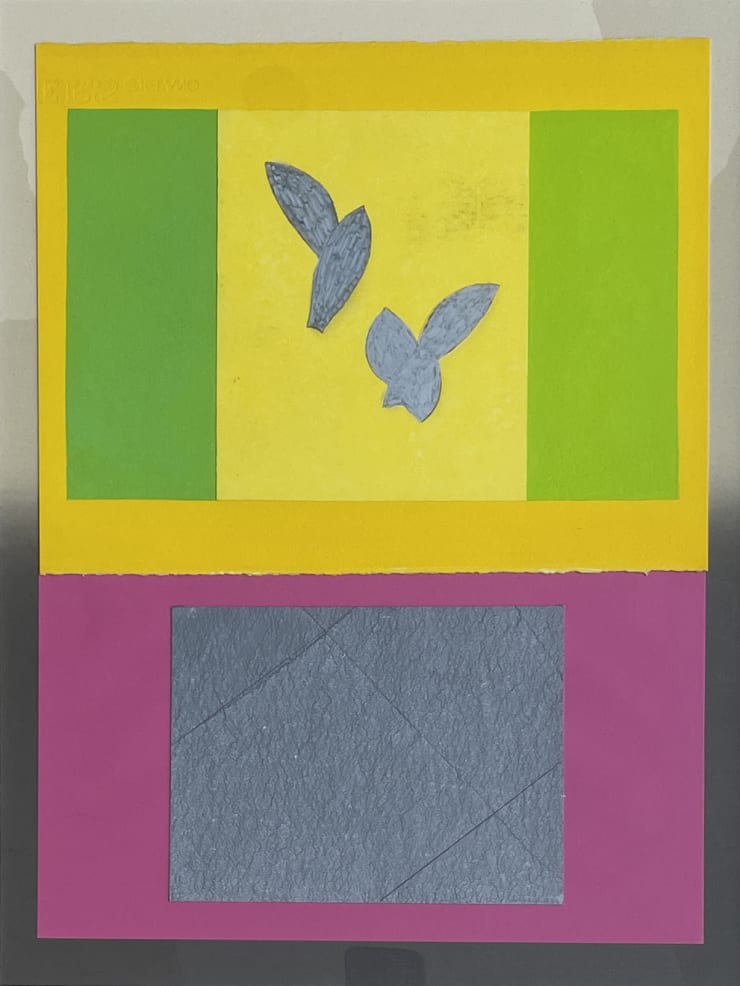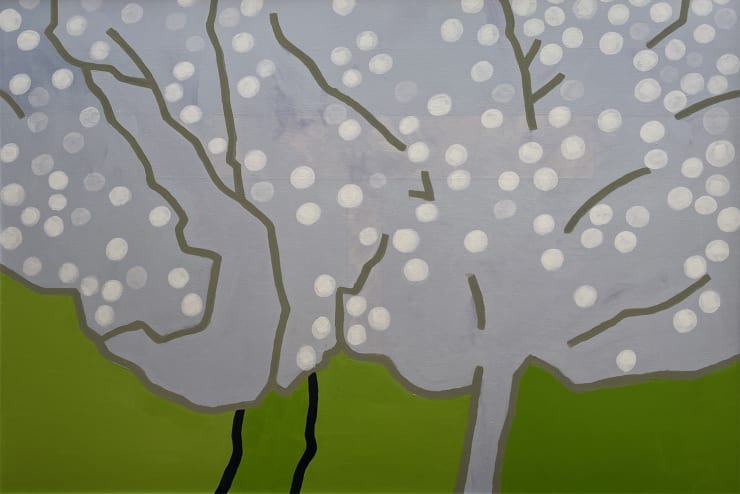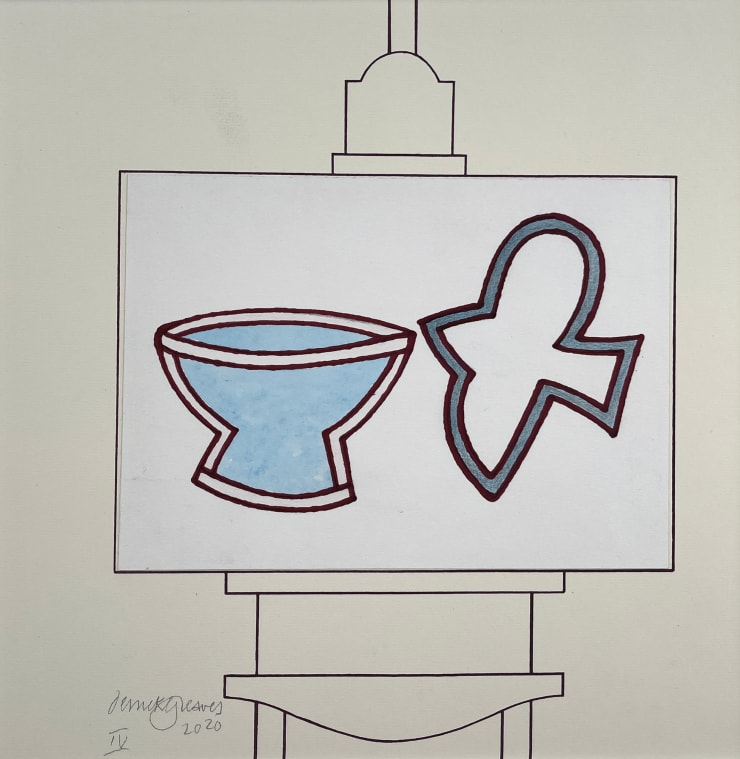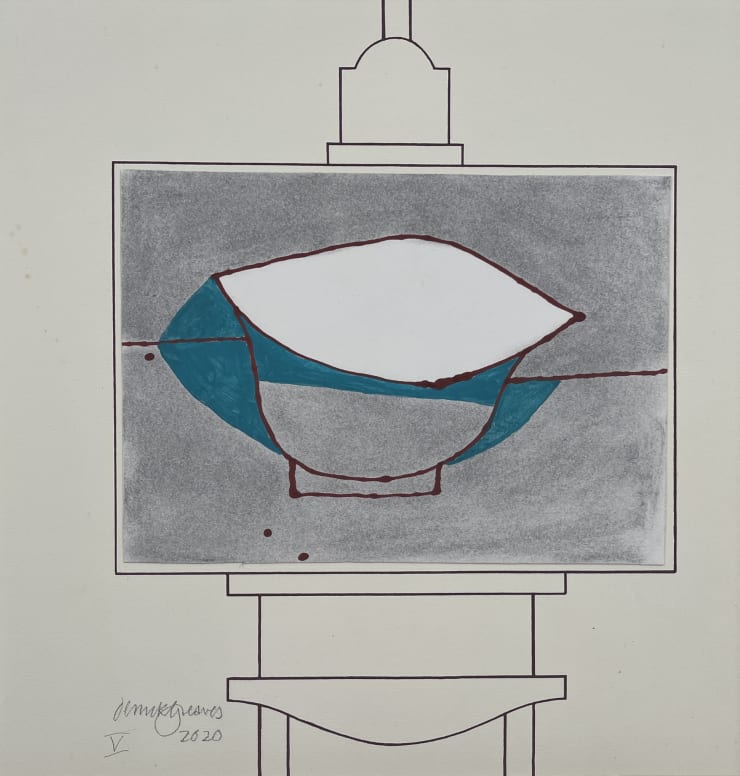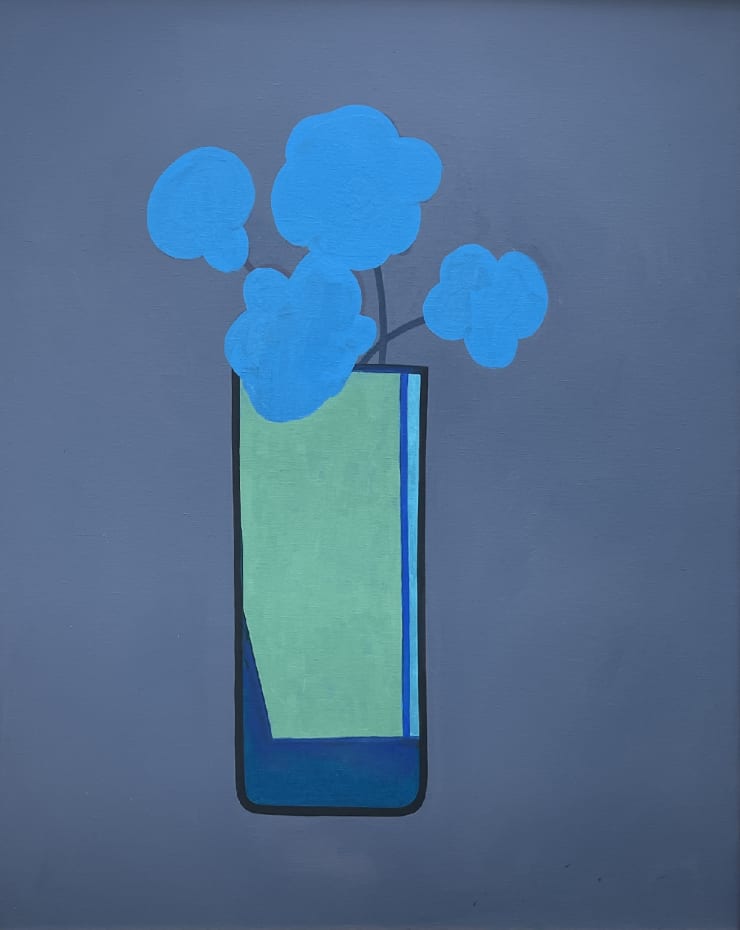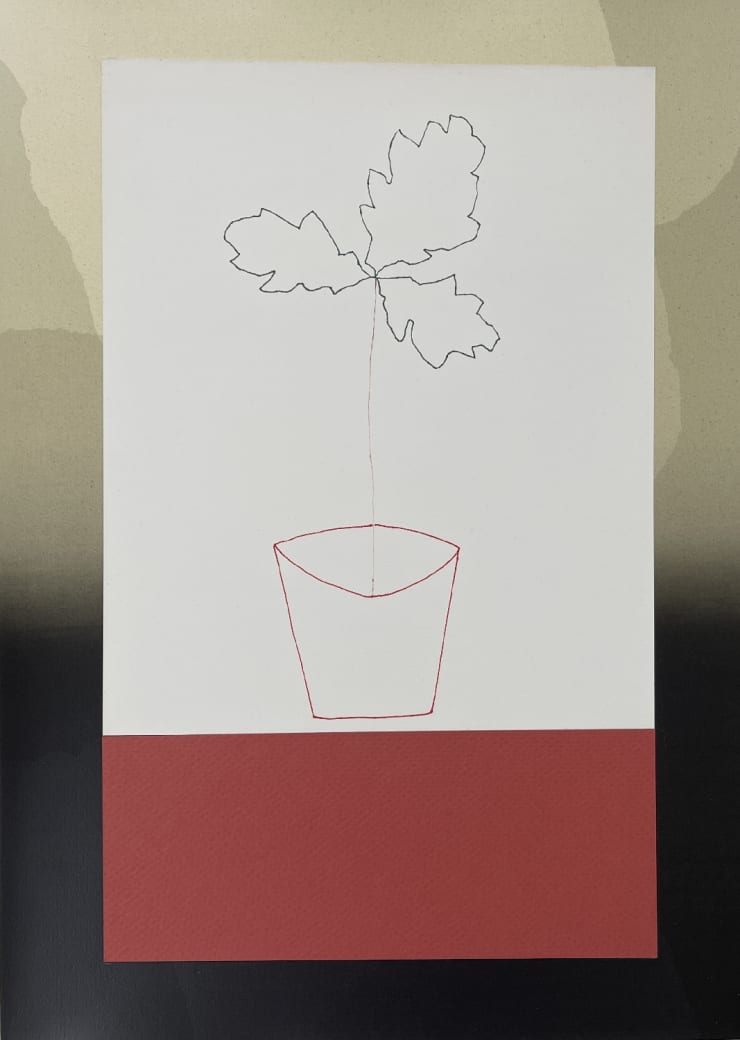James Hyman Gallery is delighted to present a new body of work by Derrick Greaves. The exhibition, A Walk Through A Life, includes paintings and collages made during 2020 and 2021.
Derrick Greaves is represented by James Hyman Gallery.
Something new has happened in the recent paintings and collages of Derrick Greaves. Made during an intense period of lock-down creativity during 2020 and 2021, these latest works are for the first time consciously self-referential. Three magisterial large scale canvases The Golden Tree, Early Blossom and Blossom (Two Trees) are a climactic postscript to the Blossom series that was the subject of Greaves' major solo show in 2020 and combine boldness with subtlety. Meanwhile two paintings entitled Artificial Flowers reveal Greaves to have reworked pictures from a decade ago. Still Life with White Lilies has also been transformed from mainly blues, greens, yellow and white to a painting dominated by red, but one in which the blues and greens continue to sing. Other paintings of this same jug, including Shadow and Jug Green represent a series of variations on a familiar theme.
Certainly, there are leitmotifs in Greaves' work, such as the jug, a vase and flowers, or depictions of an easel in the studio, that unite works that span seven decades, but in his new collages that are at the heart of the exhibition, Greaves deliberately revisits his own earlier works in a celebratory outpouring that the artist considers to be a summation of many of his concerns.
As an artist Greaves has always looked forward but now, in his 90s, he also draws from his work of earlier decades. Previously Greaves, cathartically, freed himself from the past by destroying earlier works, infamously making a bonfire of his pictures when he moved studio, and over recent decades he has often ruthlessly reworked or painted over earlier paintings. But in these latest works Greaves has revisited his plans chests in a more positive spirit to create new as well as reworked paintings and fresh collages that incorporate source material from all periods. Every possible medium is incorporated into these collages as Greaves seeks to repurpose and refashion earlier works and to give them new life and resonance. The vibrant results can be read like a series of variations, riffs on long-standing themes, glimpses of well-trodden paths and suggestions of new journeys. Collage elements include not just painted, textured and patterned paper but also, crucially, the artist's own drawings and paintings with sources that range from recent to decades old. There is a rich formal and stylistic diversity that finds focus on a set of key motifs: variations on the themes of still life, variations on the figure, on flowers and on trees.
Greaves recently discussed the series with reference to Beethoven's Diabelli Variations and there are apt comparisons. Whereas Elgar's Enigma Variations look outwards to the composer's friends, in his variations, Beethoven turns inwards to his own earlier styles. Similarly, and perhaps appropriately given the year we have lived through, Greaves's new collages have an inwardness. As with Beethoven, Greaves's late works make reference to - and actually incorporate - his earlier styles and include wit and humour, seriousness and playfulness, exploration and reflection, familiar languages and intimations of something new. What they also share is brevity. Each element is succinct and individual but taken in their entirety each sprightly part has the effect of strengthening and consolidating the whole. Like Beethoven, too, the foundation is comparatively simple, belying a mature sophistication. Each of Greaves' unique new collages is grounded, literally, by a print made many years ago, whose central motif of a flower is obliterated by the intervention of a superimposed collage, so that all that can be seen of this origin is the subtle tonal background that serves also as a framing device. Onto this ground Greaves has intervened with the collaged addition of drawings, watercolours, pastels and painting. From spare single line drawings to complex, intricate patterning. This shared grounding gives the series harmony, but within it the range is substantial. Sub themes do, however, emerge. Although each collage is self-contained there are clear relationships. In several cases pairing works bring out their wit. In Oak Seedling 1 and Oak Seedling 2 the plant grows before our eyes. Two works entitled Round Midnight (named after Thelonious Monk's famous composition) show very different moods. In one the clock is about to strike midnight and all is dark and in the other there is a sparkling lightness. Greaves has even added glitter.
Two very beautiful tonal drawings from the late 1960s or early 1970s are incorporated into Apple Blossom 1 and Apple Blossom 2 stunning variations on a recurrent theme and an echo of one of Greaves' major diptychs In the Garden (1971). Elsewhere there are other echoes of earlier paintings including Shooting the Crows (2003), Stone Tree (2007/8/14), Exotic Bird (2003). The pairing of Woman in Traffic of a woman between two cars, and Crowd of a group of figures also draws attention to a shared language, in this case rubbing into a black ground to create ragged linear forms. Two collages entitled Museum Piece have a formal economy but despite their abstraction possess something of the energy of a tribal mask. Gossips and Oh! encapsulate Greaves's wit and are an echo of his use of words, most notably in his word paintings of 1976-80 but now the effect is almost entirely comic. Other works are an abstract paean to nature, a verdant suite of greens: Quarry 1, Quarry 2, Decorated Tree, and Bush/Green/Yellow.
These relations are pursued more directly in a set of seven works: The Easel series. Symbolically the work of a week, these seven images all have a similar stylistic approach. Again the basis is a print, in this case a silk screen of a bare easel, the subject also of the powerful Studio and Garden at Night (2002), but this time Greaves creates a suite of miniature paintings on the easel that encapsulate his concerns with nature: a fish, a bird, flowers, fruit, a bowl.
In two recent figure paintings Greaves brings many of these themes together. The canvas Profile is painted over a collaged ground which creates a tension between the raggedness of the support and the elegance of the line. Meanwhile, the subtle layering of glazes in Bather creates an incredible sensation of looking through water at the standing woman's legs. The source, once more, is a very old sketch book drawing repurposed and stretched to large proportions.
From Beethoven to the music of today there is a sense of themes being reimagined and of fragments being sampled to be given new life in a new context. This regenerative design or up-cycling is what makes Greaves latest works so very much of our time!
About the artist
Derrick Greaves is one of the most important British painters of the last half century. Greaves initially gained acclaim in the 1950s, when he represented Britain at the Venice Biennale along with the other 'Kitchen-Sink' painters with whom he was associated: John Bratby, Edward Middleditch and Jack Smith.
His work has developed from the social realism of the 1950s to a more heraldic style that paralleled 1960s Pop Art, from an imagery based on nature and observable fact to more studio-bound imaginative constructs.



